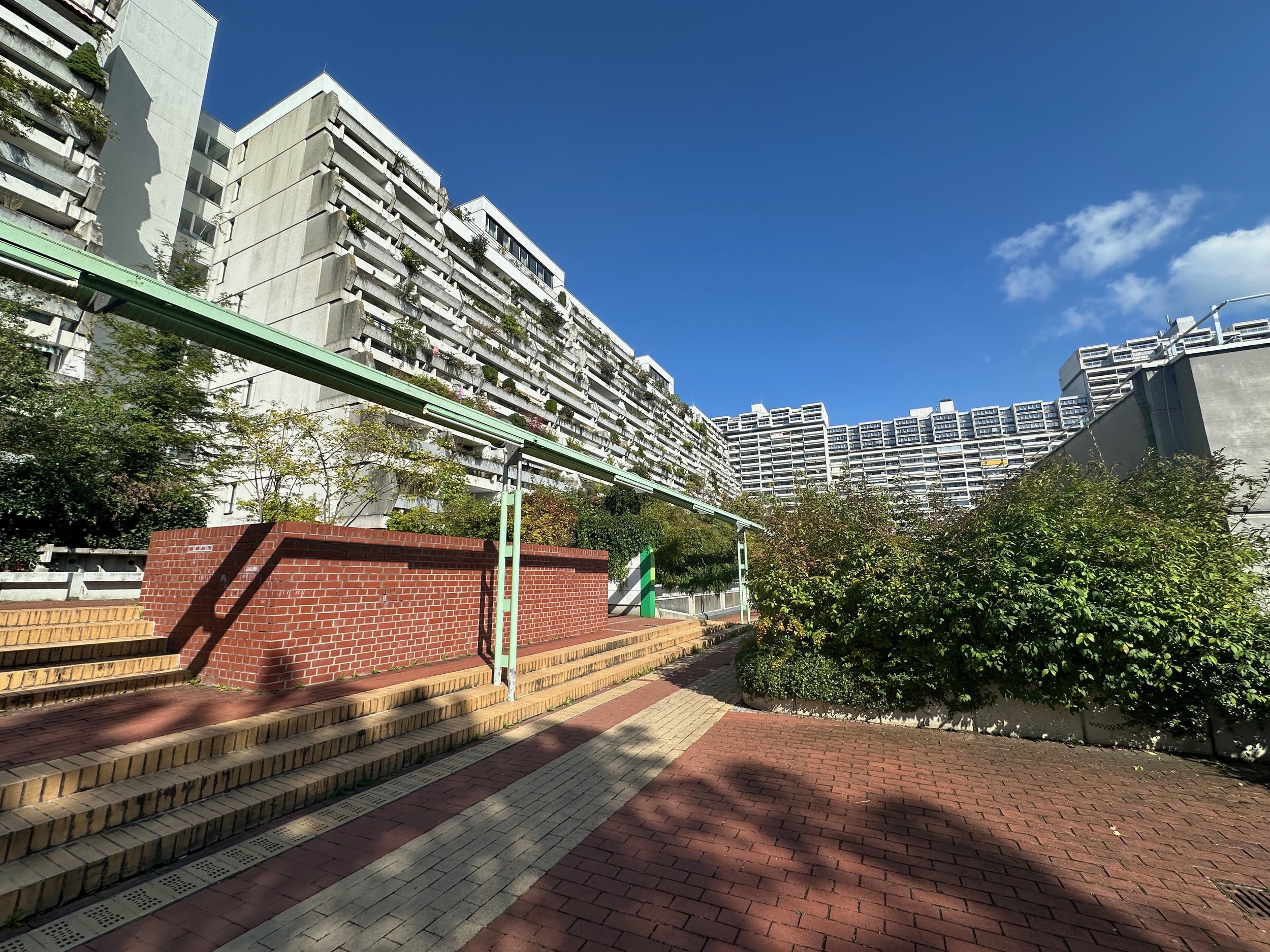Munich
18 September
An alternative to the A8 autobahn that connects Salzburg with Munich is the D304, a more direct route but 40 minutes longer. Picking its way through prim Bavarian villages every ten minutes or so, interspersed with deserted wavy roads through neat farmland, it’s the way to go if you have the time.
Our budget hotel lies on the northern edge of the city and is next to the Olympic village, built for the 1972 games. Its 3,100 residential units are still used as homes. It is also infamous as the scene of the hostage-taking of Israeli athletes during the games, memorably described in Kevin McDonalds even-handed ‘One Day in September’ documentary from 2000. The atrocity was reconstructed in Steven Spielberg’s ‘Munich” a few years later.
It’s the first piece of history I have any personal recollections of. The geometric, brutalist architecture of the village on grainy TV footage, burned its way into my memory cells and has remained there since. The confusion of the situation, as conveyed by TV news at the time, gave this nine-year old a first sense that the adult world must be a very complex place indeed.
The walking route from the hotel to the BMW plant where I’m going on a factory tour takes me through the heart of the village. Designed by Heinle, Wischer und Partners, it was intended as a showcase for modern forms of residential construction and urban planning. Vehicle and pedestrian traffic are separated from one another. The former are confined to a subterranean network of roads and the latter have foot and cycle paths that weave through the park and around the various buildings.
You do wonder if Herrs Heinle, Wischer and their partners would ever deign to live there themselves though as it’s a claustrophobic warren of paths, tunnels and footbridges. Or maybe that’s because It looks just as I remember it from 52 years ago and what happened. Regardless, it is well-looked after, peaceable and with a sense of contentment and permanence. The tragic history must be known to the residents but maybe they’ve just made the right decision which is to accept history for what it is and move on.
At BMW, I collect the ticket for the tour to learn I’ve booked one in German. For health and safety reasons, only German-speakers are allowed on it. I queue up anyway behind three visitors from the Far East and watch with interest as a Fraulein interrogates them in German, getting only nods in return. She tries the same in English but they don’t understand a word of this either and just push past her as she tells them they can’t go on the tour. Charming.
I’m next up and venture “Ich haben kleine Deutsche. Vom fümzig jahre an die Schule” which is stretching my language skills beyond breaking point.
“I think it is OK” she says, exasperated and barely concealing a wince. So I take my place for an introductory film and two-hour tour of one of the production lines of the Dingolfing plant. The production process is self-explanatory but I miss 80% of the detail from the commentary. Still, it’s 20% more than the other interlopers.
The factory is a curious mix of ultra-high-tech and traditional skills. Sheet metal is fashioned in elegant body panels through the brute-force of 5,000 tonne presses. Workers then carefully align them and a series of robots (the plant has over a thousand of them) swoop down balletically in three dimensions to apply precise welds.
And so it goes on until final assembly in what look like traditional workshops, albeit very tidy and organised ones rather than your usual grease monkey’s lair. Here workers select lights, seats, steering wheels, dashboards and so on from various bins before manually fitting them into place. It resembles a DIY mechanics approach but without the swearing. Finally, the gleaming models are started, given a final diagnostic check and then driven to a holding pen. Having seen the end-to-end process I’m amazed the cars don’t cost more than they do, given the capital investment and manpower that goes into producing them.
The next morning we ride a further nine miles north of the city to Dachau, and the memorial to the concentration camp. I’d visited once before and was struck by how sanitised it was, emphasis placed on how it was not one of the notorious extermination camps. Since then, the curation policy seems to have changed and it’s much more hard-hitting. An overwhelming avalanche of grim facts and figures with an unflinching narrative describing, brutality and suffering on an unimaginable scale. There are no words I can add to this subject that have not already been written other than to say visiting it now is possibly more relevant than it has been for ninety years, given the resurgence of extreme ideology across the continent.





